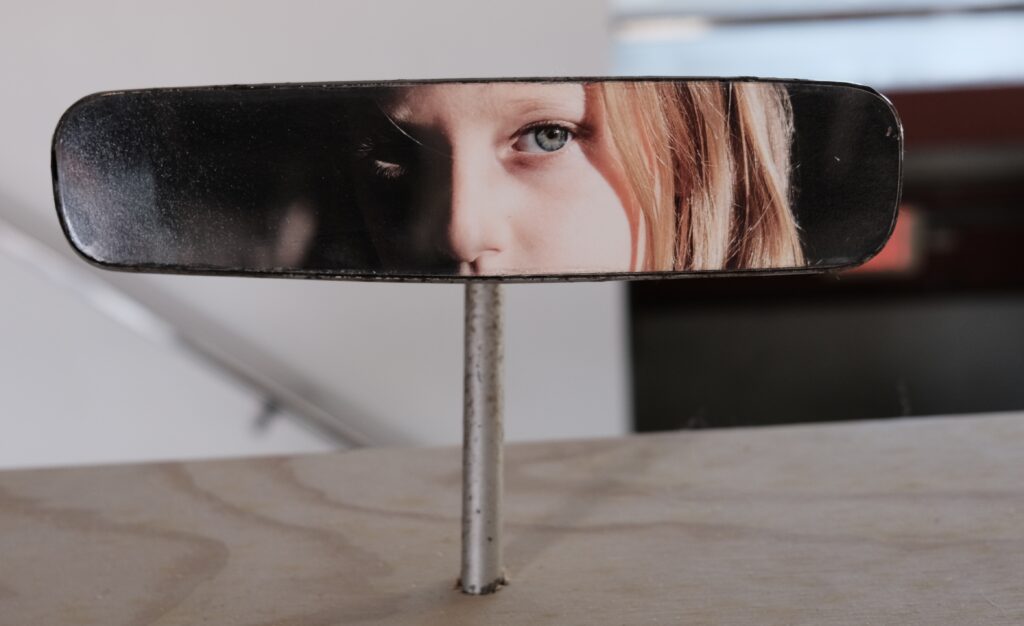
WORDS BY KIMBERLY HADDAD
Katherine Flynn has explored various career paths, with storytelling always at the core of her creative endeavors. From acting to writing to filmmaking, she has found a way to express herself authentically. However, it was not until she picked up a Fujifilm X100 Series camera after the birth of her first daughter that she truly found her passion for capturing stories through photography. Now, in the desert of Joshua Tree, Flynn and her daughters have transformed a junkyard into an art lab, where they craft unique pieces of art using found and discarded materials.
Flynn shared her latest collection at the Parks Project Discovery Center in Culver City, presenting a novel approach to framing her photography by incorporating vintage Volkswagen doors and mirrors. This process of reanimation displays themes of transition, nostalgia, and change within both the art and its materials. With a deep appreciation for observation in all of its forms—the invisibility of it, the excitement of exploration, and the element of surprise—Flynn has discovered how to connect with people and places unlike anything else before.
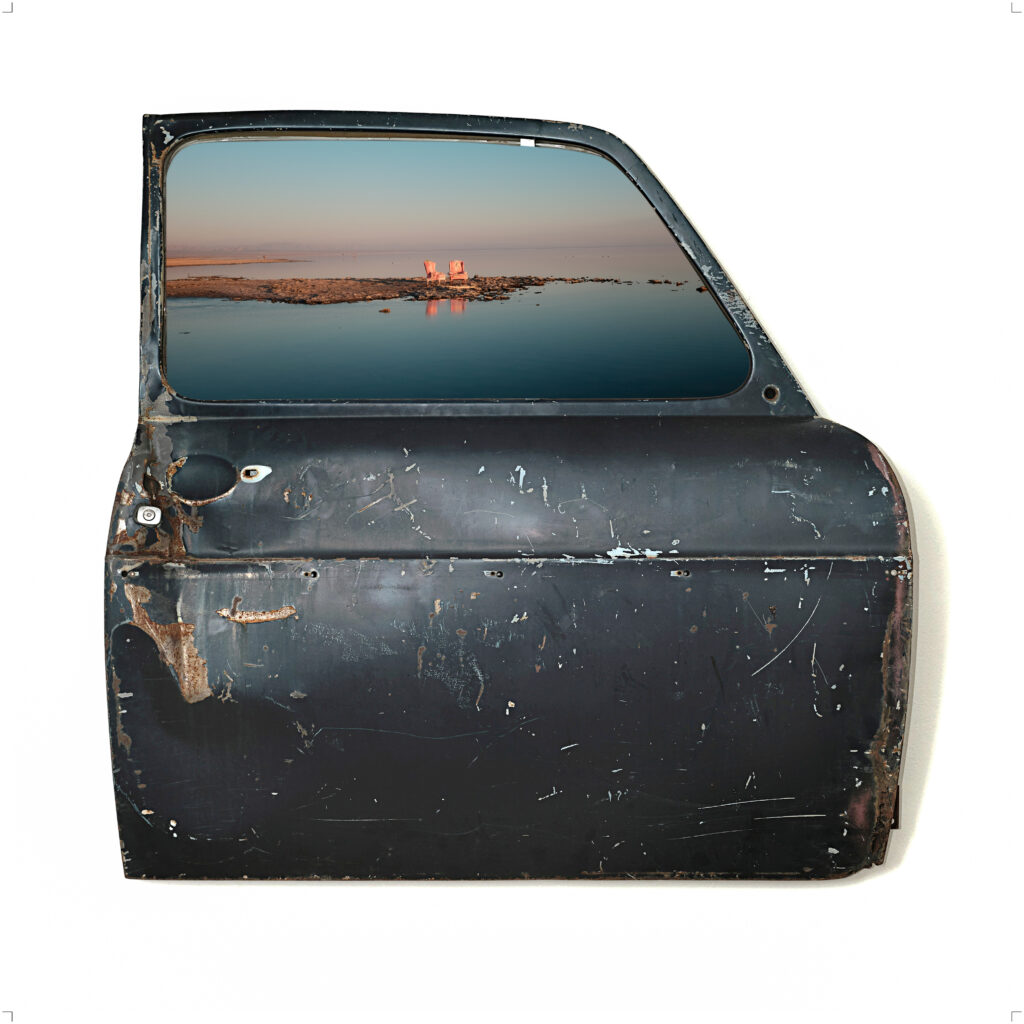
How does being an Angeleno influence the stories you choose to capture and the spaces that inspire your photography?
Growing up in Los Angeles has given me an intimate understanding of its rhythm—the way the city moves, its hidden pockets, and its contradictions. In a city as vast and fixated on specific locations, I am attracted to the areas in between, the moments that are usually unnoticed and exist beyond the popular landmarks and expected routes. I love exploring Los Angeles by foot, even in a city not known for walking, as that’s when the most unpredictable discoveries happen. I hope my photography reflects this curiosity and captures the liminal spaces, both in the environment and in ourselves.
What sparked the idea to transform your junkyard in Landers into an art laboratory? Can you share the most memorable or meaningful piece of art you and your daughters have created together and what inspired it?
The idea to turn our junkyard into an art space came naturally. It was born from a mix of longing for a place that felt like the “edge of the earth” and inspiration from some of my favorite artists like Noah Purifoy, who saw potential in discarded materials. I always dreamt of a space that felt open and limitless, and when we found this land in Landers 15 years ago, with its native beauty and proximity to BLM land, it felt like the perfect canvas. The best piece my daughters and I have created together is a spaceship, built entirely from salvaged materials. It started as a set piece we built for a short film, Townes, I made with my daughter, but it became something bigger. It was kind of a landmark in our little creative world. It’s been standing for five years now, weathered but still full of magic. We also have what we call “Robot Village,” an ever-evolving collection of robots built from found objects. They constantly change as we add new pieces and ideas.
How do you believe that giving new life to discarded items like VW doors and mirrors enhances the storytelling aspect of your art?
Using discarded doors and mirrors as frames enhances the storytelling in myart by adding layers of time and transformation to each piece. These objects once held their own stories—countless moments and histories—before being abandoned and reshaped by natural elements. Their slow, subtle changes reflect the fleeting moments I try to capture in my photography. Pairing these aged objects with transient scenes creates a dialogue between the past and present, permanence and impermanence, giving each image a richer history and sense of change. By repurposing these objects, I am engaging in a process of reanimation, turning waste into vehicles of meaning, and thus reinforcing the themes of passage, memory, and transformation that define both my work and the materials that now hold it.
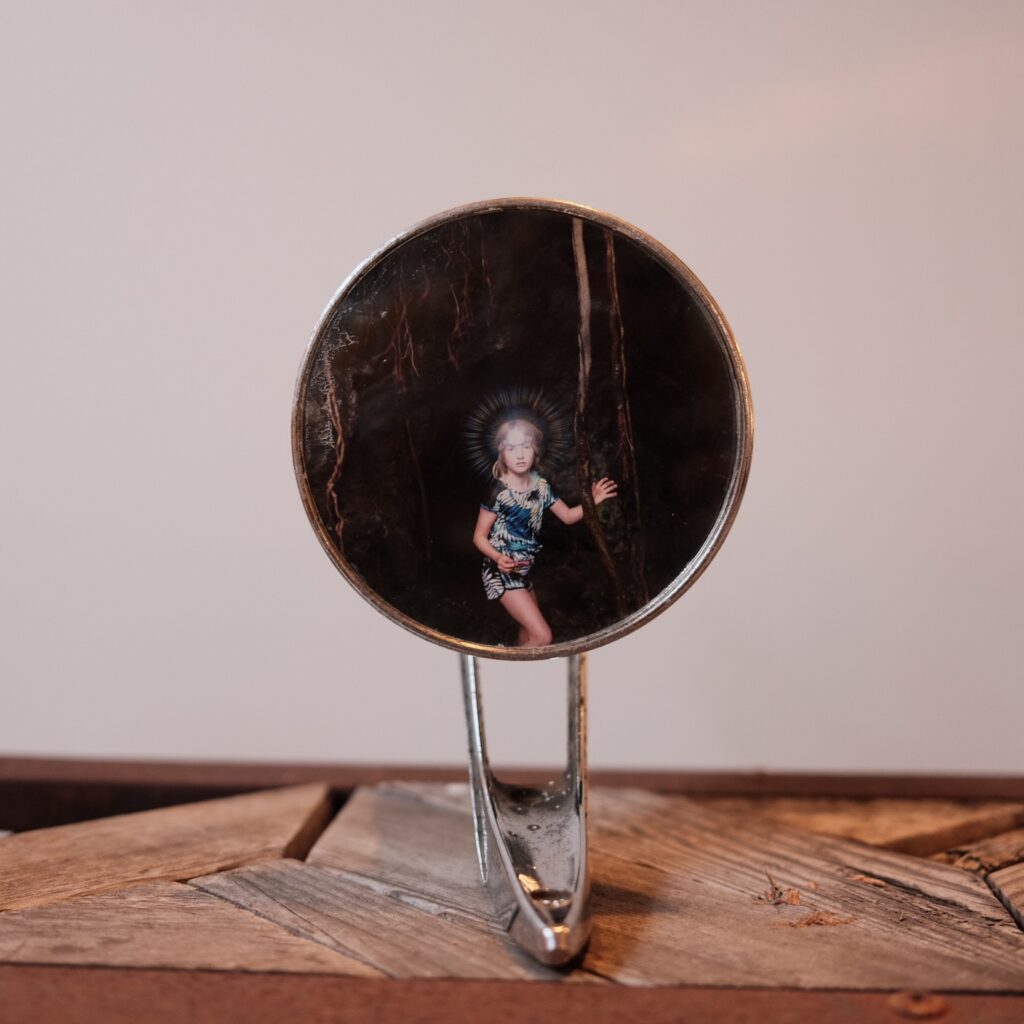
Your photography is a visual exploration of connection, spontaneity, and the unfolding stories in between. Can you discuss a specific experience where you unexpectedly captured vulnerability in a scene you photographed?
It’s hard to isolate a single moment because much of the vulnerability I capture is deeply intertwined with where I am in life. Often, when I hit the road, whether I’m chasing inspiration or navigating emotionally challenging times, I find that what I’m drawn to photograph is a reflection of my inner state and the world around me. While I cannot speak on behalf of others, many of the stories I witness while on the road belong to them. The vulnerability in my work remains a candid expression of my own experiences. It’s a reflection of the spaces between what we see and what we feel.
How has the shift towards more sustainable presentation methods influenced your approach to projects, and what message do you hope to convey through this eco-conscious method?
The sustainable aspect of my work came naturally. It wasn’t initially intended, but rather a reflection of how I move through my life in general. After my last exhibit, which used traditional framing methods, I became more aware of the waste involved and felt creatively disconnected from that part of the process. Now, these discarded materials don’t just display my photographs but have become central to their meaning and the overall artistic vision. It’s a way of seeing beauty in what’s already here and embracing transformation rather than constant consumption. In a world that constantly pushes for the next and the new, I want to highlight the value in what we often overlook. There’s so much newness to be discovered in what already exists. We just have to slow down, look differently, and find new meaning in what time has reshaped.
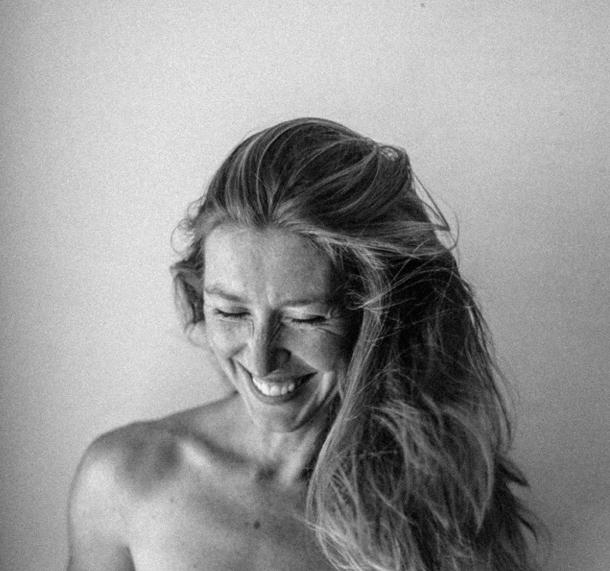
Can you elaborate on photographing FKA Twigs for the “Holy Terrain” video and how you believe your photography has contributed to its narrative and overall impact?
I think the shoot with FKA Twigs actually shaped me as a photographer. I was still learning, being prepared, trusting myself to capture moments on the spot, and staying invisible. The artistry came 100 percent from the filmmaker, the crew, and most importantly, Twigs herself. I was just lucky enough to be there. Hopefully, my contribution in capturing these authentic moments complemented the video’s narrative and aesthetic.
How do you hope your audience interprets and engages with your work?
I hope my work resonates with people in a personal and emotional way that allows them to find their own meanings within it. Everyone I’ve talked to has engaged with it differently. Some feel nostalgia, others feel a sense of longing. It often taps into memories of moments on the road or experiences they wish they could hold onto. Beyond that, I hope it encourages a new way of seeing and finding beauty in everyday things that are often ignored. If my work can inspire someone to look at a forgotten object or a transient moment with fresh eyes, to find joy in memory and transformation, then, I guess that’s what I hope.
*Flynn is offering complimentary family photo sessions for families affected by the recent fires, which includes a one-hour photoshoot, editing services, and the option to choose the location.
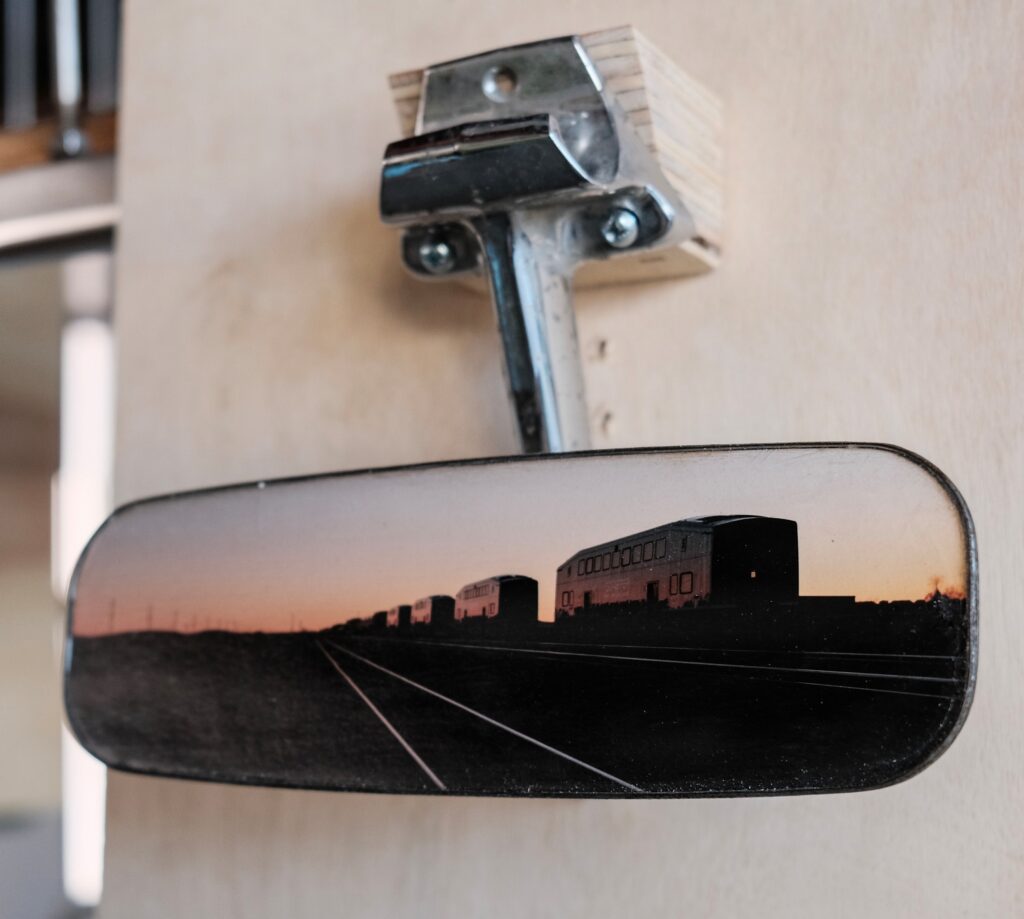
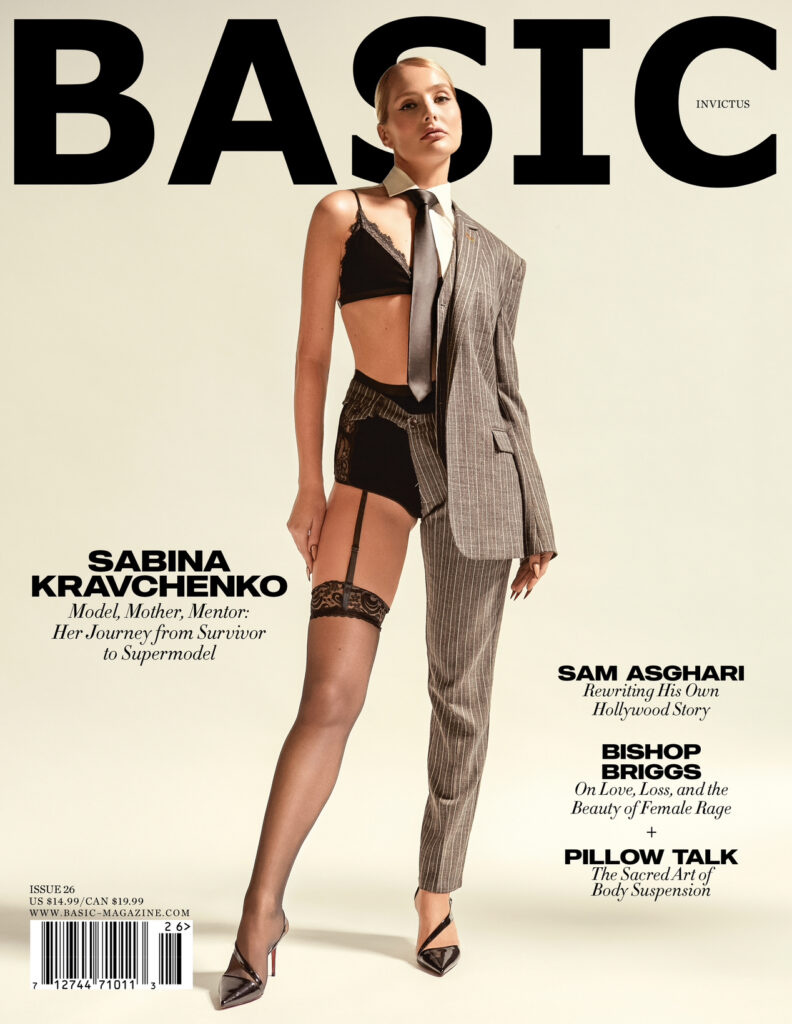
BUY ISSUE 26
You may also like
-
Staying Loud, Staying True: Spacey Jane’s Evolution from Perth to the World
-
FIGHT TO THE OTHER SIDE: Hilary Roberts on Suffering, Freedom, and Sharing her Mafia Gifts
-
SEXY 4EVER – An Interview with INJI
-
BREAKING BREAD with GAVIN ROSSDALE: A Conversation about Music, Food, and the Art of Hospitality
-
UNCOVERED: The Liberation of MODEL ROZ
-
BISHOP BRIGGS: Exploring Love, Loss and the Beauty of Female Rage